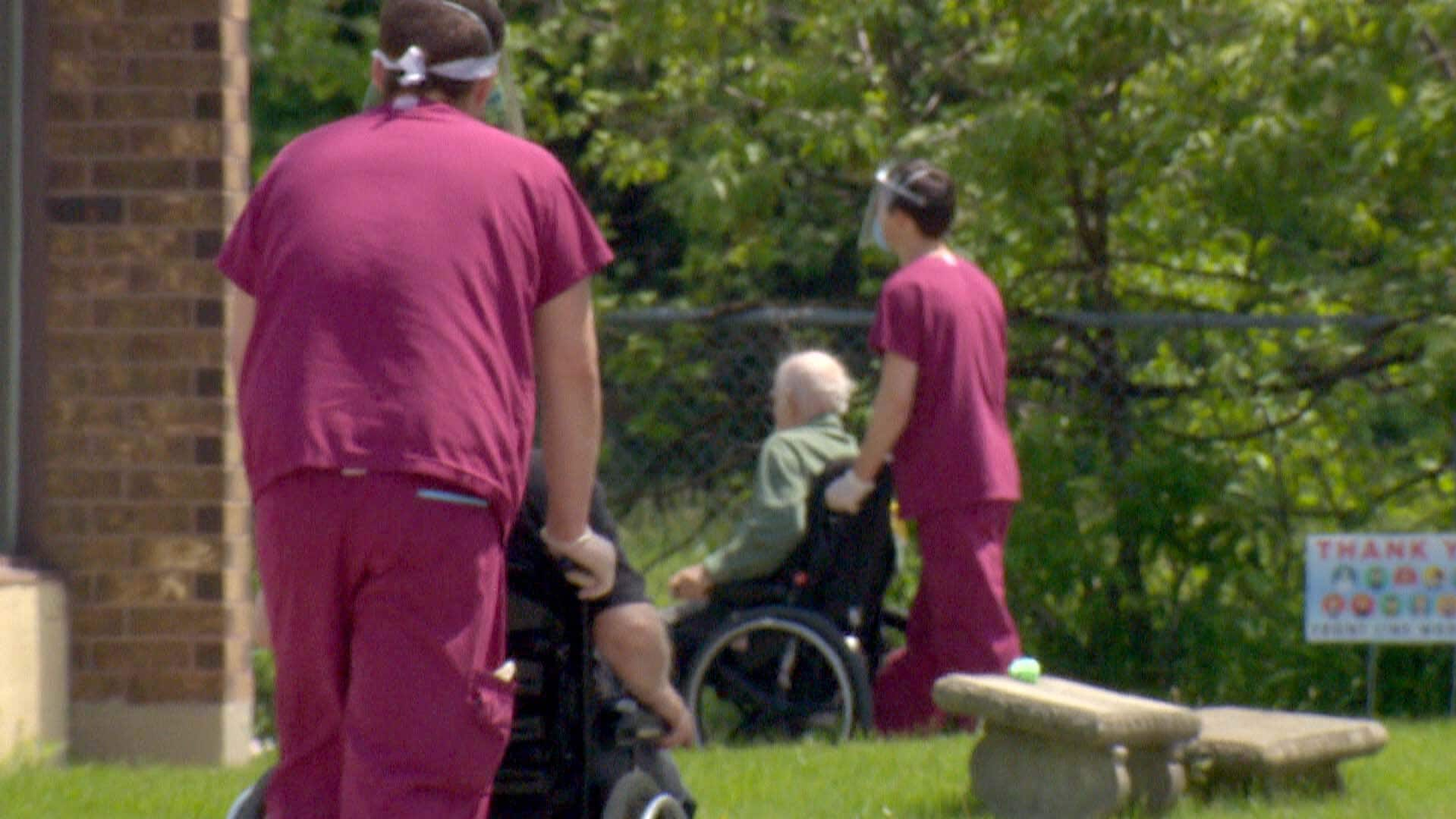Long-term care homes in Ontario with a poor track record are getting tax money to expand

While the Ontario government says it is on track to meet its goal of 30,000 new long-term care beds by 2028, a CBC News analysis of government data found that several homes planning to expand with taxpayer support , are operated by operators with repeated violations or poor performance due to the pandemic.
Long-Term Care Minister Paul Calandra says he is confident homes will comply with the new accountability and oversight tools introduced in their legislation, the Fixing Long Term Care Act, which took effect in April 2022.
However, some of the measures designed to solve Ontario’s long-term care problems since the pandemic appear to fall far short of what the province promised, with inconsistent fines and proactive inspections taking place in only a fraction of homes.
CBC News reviewed fines issued from April 2022 to early May 2023, and examined each home’s inspection reports detailing the details of the violations. Those reports were then compared to a few homes with similar repeat offenses that did not receive fines.
CBC also compared the number of proactive inspections before and after the pandemic, finding that where homes used to get proactive inspections once a year before being canceled in 2018, only a fraction have had proactive inspections since their reintroduction in 2022.
Meanwhile, as part of its drive to meet its goal for new long-term care beds, the county is paying for expansions in homes operated by operators with some of the worst COVID outcomes.
Ontario has promised to reinstate long-term care, but an investigation by CBC News found that many of the promised accountability measures fall short. The province is also approving and funding expansions for the companies responsible for the highest pandemic mortality rates in long-term care.
Calandra has faith in the homes the ministry has supported, he told CBC in an interview.
“The regulations we put into the Fixing Long Term Care Act, the standards we put into it, go way beyond anything that was done before,” said Calandra.
“We are going to make significant investments, but the standards will be the highest in North America.”
But Jane Meadus, an attorney with the Advocacy Center for the Elderly, says the county shouldn’t be so quick to trust the operators she says have failed seniors in the past.
“I think you [should] You have to show that you have a good track record of bringing in these expansions and this additional money,” said Meadus, referring to the expansion grants.
“I don’t think they should be rewarded,” she said. “In fact, I don’t think they should be getting permits.”
Only a few homes see fines for breaking rules
At the start of the pandemic, Prime Minister Doug Ford said he would “not hesitate to revoke permits” after the military was called in to some homes struggling to keep their residents alive. The Canadian Forces reported cockroaches and filthy conditions in homes, with some residents dying from dehydration rather than COVID.
But instead of revoking permits, his government chose to refresh the Long-Term Care Homes Act to increase oversight and enforcement measures, in the expectation that they would induce bad actors to comply.
One of those enforcement measures was “administrative monetary fines” (AMPs) for non-compliance with the law. It also included possible fines of up to $1 million for companies that failed to comply with the law.
CBC found that most penalties were $1,100 or $5,500, regardless of the type of violation, ranging from poor hand washing to physical abuse of residents by staff.
Most of the violations concerned infection prevention and failed checks, medication errors, poor skin and wound care, and mistreatment between staff and residents. Charges escalated as the offense was repeated, but never reached more than $16,500 — a far cry from the $1 million maximum the Department announced in its new law.
“I’m really concerned that they’re not using the tools they said they put into legislation,” Meadus said, adding that the new Adoption of the Long-Term Care Act was intended to make it easier for the government to impose fines.
More inspectors, less proactive inspections
Another enforcement measure issued by the province in 2022 was the reduction of proactive inspections of WZWs. A previous CBC analysis of inspection reports found that inspectors did extensive proactive inspections of nearly every home each year, but stopped them in 2018 — a move the ministry says was designed to clear a backlog of reactive inspections due to complaints and critical incidents.
From 2015 to 2017, the Ministry conducted an average of more than 600 proactive inspections per year. In the 14 months since the introduction of a new version of proactive inspections on June 20, the ministry has carried out just 105.
“I think because we’re not doing these full inspections, we’ve yet to see what’s really going on in long-term care today,” Meadus said. She says if the county doesn’t consistently inspect every home in a comprehensive, proactive manner, monetary fines fall short as an enforcement tool.
“The operators, I think, feel like they can get away with a lot of things because there’s been no repercussions at all,” Meadus said.
“They get more money, they get new buildings, which the county finances, and they get extra permits, more beds, so nothing happened in that realm.”
The Ontario government has pledged $6.4 billion build an additional 30,000 long-term care beds by 2028 and modernize another 28,000. The Department of Ontario normally gives construction grants to homes to upgrade, ranging from $20.53 to $23.78 per bed, per day, paid monthly to the operator for a period of 25 years.
But if projects now manage to start construction on August 31, 2023, they will receive a additional subsidy of up to $35 per bed, per day, for 25 years.
Homes with poor COVID results are now expanding
The lack of impact on homes with some of the worst death rates from the pandemic is especially troubling for those who have lost loved ones there.
Seventy residents died at Orchard Villa, a care home in Pickering, Ontario, during the first wave of the pandemic. The fact that the government is pushing forward an expansion that would increase the home’s population and receive millions in taxpayer subsidies makes Cathy Parkes, whose father Paul was one of the first to die there, even worse.
“The amount of profit that’s going to bring if they don’t really show that they’ve changed anything, I think is incredible,” Parkes said. “They keep making their profit and behaving the same way and it’s a free pass. And it’s a free pass at the expense of people like my father.”

During the pandemic, conditions in Orchard Villa became so bad that the military was deployed there and in four other homes in Ontario. a report from the Canadian Forces revealed a chaotic scene of residents sleeping on bare mattresses due to a lack of supplies, a resident’s broken hip not addressed by staff and residents fed while lying in their beds, leading to a suffocation incident that “may have contributed to to the death of a resident.”
Families who were able to take their sick loved ones away and take them to the hospital reported suffering from malnutrition and dehydration.
Orchard Villa is owned by Southbridge Care Homes, a for-profit chain with more than 30 homes across the county. The homes exposed to COVID had, according to a previous CBC analysis after the first wave of COVID.
Orchard Villa had 14 instances of non-compliance during their last posted inspection in January 2023. This included failed infection prevention and control and failure to report critical incidents – both of which were already written for the house in 2022. Yet there were no financial fines imposed.
“They’ve had three years to make really significant changes and they haven’t,” Parkes said. “I’m not sure how you reward that with a 30-year license.”
CBC reached out to Southbridge for comment several times, but received no response.
More inspections, fines coming in the fall: Calandra
Ontario’s Long-Term Care Minister Paul Calandra has publicly expressed support for Orchard Villa’s expansion plans, telling CBC in an interview that he is confident his Fixing Long-Term Care Act will bring accountability and oversight.

“Orchard Villa, in Pickering in particular, should have been demolished long before the pandemic hit,” the minister said. “We’re going to build a new state-of-the-art home. We’re going to build infection prevention and control built into all of our new homes as part of the standard.”
Calandra also said more proactive inspections will come when the newly hired inspectors are trained by the fall – and then there will be bigger fines. He said he will work with healthcare providers to ensure that the homes the government has invested in will comply with regulations.
“We explained to them that we are going to make significant investments, but the standards will be the highest in North America,” he said. “I will hold each house accountable for meeting those very, very high standards.”
The minister’s zoning decisions circumvent community opposition to projects
The county has already issued hundreds of new bed permits to Southbridge for at least three Southbridge residences, and has issued Ministerial Zoning Ordinances (MZOs) for an additional three Southbridge residences. These orders bypass any municipal or community opposition and allow the company to get to work right away.
Since 2018, 19 MZOs have been issued to long-term care facilities.
“No one is saying these houses shouldn’t be built, we are saying there is a huge problem in managing the houses,” said Jane Meadus.
“They have no track record… and why do we allow them to have millions and millions of dollars of money? A new building will not solve the poor care,’ she said.




